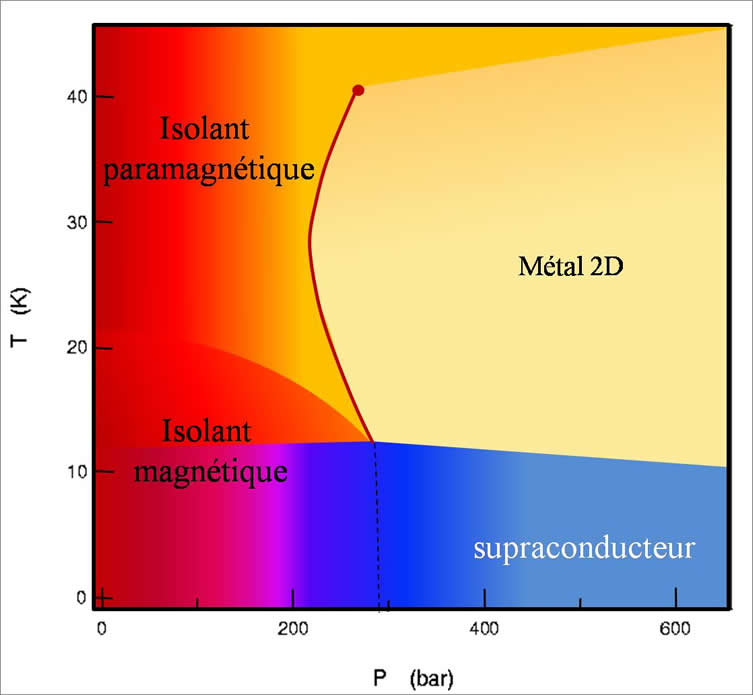


 In the 70’s, american researchers predicted high temperature superconductivity in conducting materials made of stacking blocks of organic molecules based on theoretical speculations. This started a renewal of the research for superconducting materials.
In the 70’s, american researchers predicted high temperature superconductivity in conducting materials made of stacking blocks of organic molecules based on theoretical speculations. This started a renewal of the research for superconducting materials.
A strong collaboration between teams of the « Laboratoire de Physique des Solide » of Orsay for the electronic and structural properties and for theory, and the help of the Copenhaguen university led end of 1979 to the discovery in Orsay of the first organic superconductor, based on molecules of fulvalene type.
 In these materials made of staking of colones of organic molecules able to acquire a positive charge in the presence of an inorganic ion or a molecule which accepts electrons, the electric transport is of one-dimension type along the axe of the stacking, as seen in the figure.
In these materials made of staking of colones of organic molecules able to acquire a positive charge in the presence of an inorganic ion or a molecule which accepts electrons, the electric transport is of one-dimension type along the axe of the stacking, as seen in the figure.
 The phase diagram pressure-chemistry-temperature-magnetic field reveals a rich variety of novel physical properties unknown till then, as shown in the figure (see first diagram). One dimensional organic superconductors offer only pretty small critical temperatures of about a Kelvin or so. But another type of componds in which transport goes along planes in layer structures has allowed to increase critical temperature up to 14 Kelvin (see 2nd phase diagram).
The phase diagram pressure-chemistry-temperature-magnetic field reveals a rich variety of novel physical properties unknown till then, as shown in the figure (see first diagram). One dimensional organic superconductors offer only pretty small critical temperatures of about a Kelvin or so. But another type of componds in which transport goes along planes in layer structures has allowed to increase critical temperature up to 14 Kelvin (see 2nd phase diagram).
![phase diagram typical of 2D organic superconductors such as kappa-(BEDT-TTF)2Cu[N(CN)2]Cl. <br/>Denis Jérôme, Claude Pasquier, LPS, Orsay](../media/images/Recherche/organiques2.jpg) These organic 1D superconductors show typical properties found in others 1D systems such as carbon nanotubes. The 2D organic superconductors show strong similarities with cuprates or pnictides
These organic 1D superconductors show typical properties found in others 1D systems such as carbon nanotubes. The 2D organic superconductors show strong similarities with cuprates or pnictides
.
